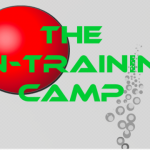Sustainable Exercise – How To Stay In The Game!
For the Baby Boomer era, the word was “exercise” the fix-all. If you worked out, you were cool. The harder, the longer, the faster, and the more you worked out, it was theorized, the better your health. The Baby Boomers taught their kids the same values, and it continues down through generations. Unfortunately, currently there are signs that the Baby Boomers might have done too much! Excessive exercise has given them risk factors that are the same as a couch potato! And guess what? These values are spanning the younger generations too.
Baby Boomers are hard workers, a lot of them being desk jockeys. With limited time on their hands, the time they allotted for movement was minimal, and worse, done after a day full of sitting. This resulted in what is called “Boomeritis“, a term coined by Dr. Nicolas A DiNubile, an orthopedic surgeon. Boomeritis is the effect of the Baby Boomers trying to get in exercise any way they could, and this usually resulted in imbalanced fitness routines, marathon running, and triathlons. Now, down through the generations we have workout routines like P90X, CrossFit, and several “Boot Camp” style training modalities. These are a huge improvement over the aerobics, running, and triathlons because they are mixed and constantly changing models. The great thing about these workouts is that they are always growing by adding the benefits of skill acquisition, mobility and injury prevention. Unfortunately, there still is a lot of damage occurring because of long workouts, too many reps, poor movement patterns, and poorly selected movements and movement combinations.
Not a mobility program in the world will be able to fix the future ailments that will pop up after a decade of overtraining. The only fix is making whatever training you do sustainable, and that means eliminating the movements that are risky for you and choosing the ones with the highest rate of return. This doesn’t mean that you quit your P90X, CrossFit, or Bootcamp. It means finding a trainer that might see that, for example, a snatch isn’t right for the professional who relies on their shoulder, elbow and wrists being healthy and sees that a power clean might be a better choice. I know a lot of folks will agree with this. There is no reason, in the context of the big picture of life, that EVERYONE needs to know how to snatch!
Over the years I have trained very hard. From being an athlete on the US Ski Team for 14 years, to going nuts with CrossFit for a decade, the dysfunction in my body that youth masked, is rearing it’s ugly head. It’s sad. I love working out, especially with a group. But, in my current state, I have had to seriously consider a path of healing so as to not be in pain on a daily basis. I have tried to warn the un-evolved version of the trainee: the one who is so excited about their training program that they show up at the gym 6 times a week without fail. It is all in vain. That is why I have decided that I would start getting the idea of sustainable exercise out there. One of my models, MDME™, is based on minimum dose, maximum effect training. I believe everyone should be doing that for optimum health! The problem is, people are just too invested in the traditional guidance that exercise has NO downsides. They don’t accept the fact that it can possibly be detrimental to their health. The warning that “the dose makes the poison” is really hard to convey to a younger person.
The more I look back, the more I realize that all the training we do should not be to “max out” on our clean and jerk next week, but so we can move around freely and without pain in our 40’s, 50’s, 60’s and beyond. If you are a competitor and are training at max intensity, you need to understand that you are trying to get good and not healthy. What I see around me are surgeons and physical therapists with überfull schedules! Being fit and hurt, is not truly fit and it is certainly not health.
My message is this: Have some introspection, look around you, and find good resources that will help you make the proper decisions on your training volume and how it impacts you, your life and your health. Look for a trainer that is not afraid to send you home or give you an appropriate alternate workout, different from anybody else’s in the gym, when you drag your ass in on your fifth workout of the week. Ask the gyms who offer “unlimited” training without moderation why they do it? It is easy to get a lot of people fit for the next 5 years. The question is, how do you keep people fit and healthy for the next 20? My answer is this: fitness that is focused on health and sustainable exercise — appropriate volume and safe, well chosen combinations of movements, thus returning to the traditional idea of sport “play” leaving “gym-time” as an accessory rather than a dominating part of one’s life.
No Equipment Needed Workout:
*Run 200 meters and do 15 push ups 4 rounds
*please warm up appropriately










